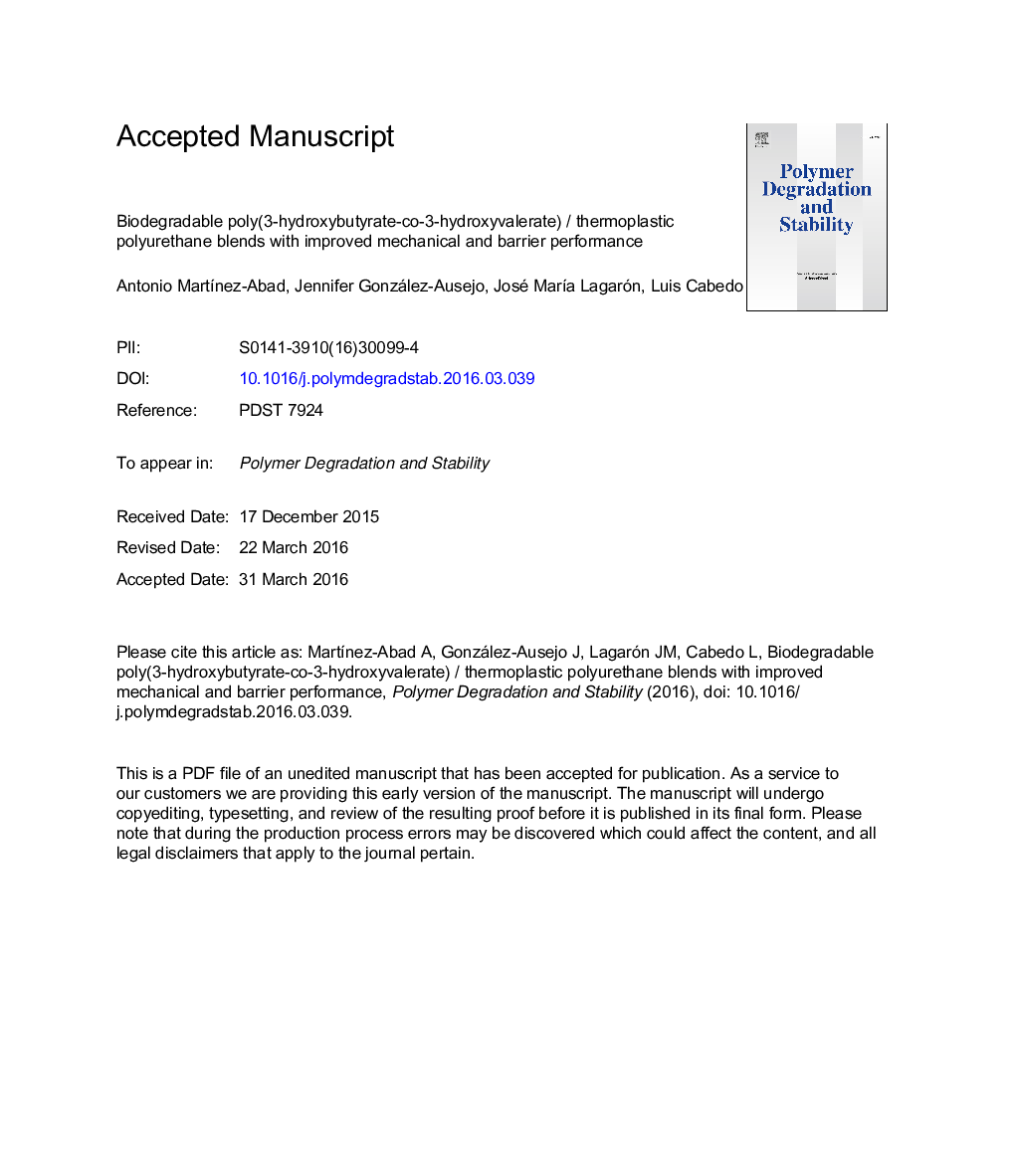| Article ID | Journal | Published Year | Pages | File Type |
|---|---|---|---|---|
| 5200999 | Polymer Degradation and Stability | 2016 | 24 Pages |
Abstract
Poly(3-hydroxybutyrate-co-3-hydroxyvalerate) (PHBV) polymers pose a green alternative to fossil-fuel derived polymers, as they exhibit good biocompatibility, biodegradability and outstanding barrier performance compared to other biopolyesters. However, their excessive brittleness has not yet been overcome without compromising barrier performance. In this work, a native ester-based thermoplastic polyurethane (TPU) not stabilised against hydrolysis, has been thoroughly assessed for the first time as an additive in melt blends with PHBV. Phase segregation in scanning electron microscopy (SEM) confirmed the immiscibility of the two polymers, however a degree of interaction has been found. Wide-angle X-ray scattering and differential scanning calorimetry revealed no major effect of the TPU on the crystallinity of the PHBV phase. The onset and kinetics of thermal degradation was not altered by the presence of the TPU up to 50 wt% content. Blends with increasing TPU contents showed a gradual decrease in the modulus of elasticity and tensile strength, while a substantial increase in elongation at break has been found for contents of TPU above 20 wt%, which resulted an improvement in the overall toughness of the blends. The excellent barrier performance of the PHBV against water vapour and aroma compounds was shown to be unaffected by TPU loads of â¤30 wt%. Full decomposition of neat PHBV and PHBV/TPU blends below 50 wt% TPU content was achieved after 40 days according to biodisintegration standards (ISO 20200). The study puts forward the potential use of TPU to improve the mechanical performance of these natural biopolyesters without compromising the barrier properties or the biodisintegratibility of the melt blends.
Related Topics
Physical Sciences and Engineering
Chemistry
Organic Chemistry
Authors
Antonio MartÃnez-Abad, Jennifer González-Ausejo, José MarÃa Lagarón, Luis Cabedo,
